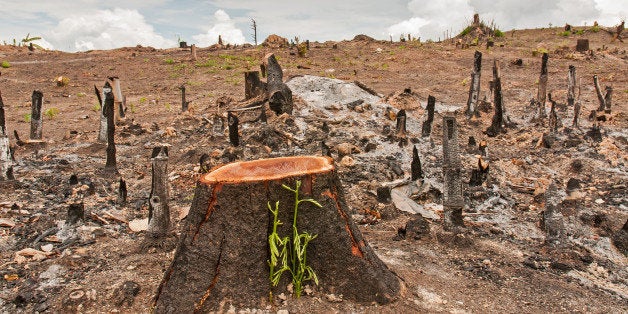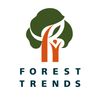
Forest people have managed their land sustainably for hundreds – and sometimes thousands – of years. They have, as a result, contributed the least to climate change, but they may suffer the most from its consequences. If that happens, their suffering will become our suffering as forests degrade and disappear, releasing billions of tons of carbon dioxide into the atmosphere.
That’s why environmental NGOs advocate for “Reducing Emissions from Deforestation and Degradation”. Thanks to their efforts, companies, governments, and individuals have voluntarily invested billions in climate action over the last quarter century, and now governments around the world have pledged more than $7 billion to REDD through the end of this year.
These seven articles from Ecosystem Marketplace offer an accessible introduction to avoided deforestation actions and how they're financed – and especially how it relates to indigenous people.
REDD Dawn: The Birth of Forest Carbon looks back at the world’s first REDD project, which was conceived in 1988 by the World Resources Institute. It offers a brief introduction to the science of carbon accounting and an overview of REDD within the climate talks.
Indigenous People Explore Many Shades of REDD looks at how REDD has evolved on indigenous territories to-date, and how indigenous leaders believe it must change to truly deliver on its potential.
Chocó-Darién: What Projects Can – and Cannot – Achieve offers a deep dive into a project developed by the Afro-Colombian Tolo River People – and a primer on how REDD plays out on the ground.
Indigenous Life Plans and Carbon Finance: Two Sides of the Same Coin? examines the symbiotic relationship between indigenous “Life Plans” and REDD.
The Surui Forest Carbon Project: Lifeline For A Life Plan offers a detailed glimpse inside a pioneering indigenous project built on an indigenous Life Plan. Initially posted in 2013, it’s a bit dated, but still a good read.
Jurisdictional REDD: Long Deferred, Soon Delivered examines the state of “jurisdictional” REDD programs – government-to-government programs that are designed to reduce deforestation across an entire state or country.
Avoiding Deforestation And Green Supply Chains: The Yin And Yang Of Saving Forests examines role that REDD finance can play in helping to purge deforestation from corporate supply-chains.
By Christopher Pollon
June 5, 2015 | On a daily basis in the dry season, flat-bed trucks rumble up an offshoot of Brazil's Highway 364 laden with dead trees illegally ripped from the Zoró Indigenous Territory, which lies at the southern edge of the Brazilian Amazon. The bounty includes old-growth teak and mahogany destined for luxury furniture showrooms across Brazil and around the world.
The finished wood from a single mahogany trunk can fetch tens of thousands of dollars, but only a few pennies of that will go to members of the Zoró indigenous people, who make their money by illegally escorting loggers to the most productive parts of their forest. It's a practice that many Zoró say they'd rather abandon, but they see no choice if they're to feed their families.
After leaving the Zoró territory, the trucks pass along the northern edge of the Sete de Setembro territory, where the Paiter-Surui community once logged just as aggressively as the Zoró do today.
"We had survived for centuries by nurturing the forest, but to survive in the modern market economy, we had to let outsiders come in and chop the mahogany and teak," says Almir Narayamoga Surui, chief of the Paiter-Surui people. "As the trees fell, the birds went silent, the animals and fish retreated, and our people lost their way."
But that changed dramatically over the past five years, as most of his people voted to give up logging. Instead, they tapped into financing for “REDD” (Reduced Emissions from Deforestation, Degradation) to earn carbon offsets by saving their forest – becoming the first indigenous people to do so. Income from the offsets they sell is being used to jump-start a 50-Year Development Plan that builds a sustainable economy on non-timber forest products like Brazil nuts and acai berries, as well as sustainable fisheries and ecotourism.
The Rise and Limits of REDD
The Surui Forest Carbon Project is one of hundreds of REDD projects around the world, according to the latest Ecosystem Marketplace State of Forest Carbon Markets Report. But what worked for the Paiter-Surui might not work for all indigenous territories facing dire threats from deforestation – as one would find if they followed those same logging trucks out of the Sete de Setembro territory and through the southern tip of the Igarapé Lourdes territory.
This is home to two other people: the Gavião and some of the Arara, both of whom have so far resisted the siren song of logging. But illegal incursions have been taking place along the road, and the people of Igarapé Lourdes also face financial challenges: health-care costs are skyrocketing, and they need money as much as the Paiter-Surui and Zoró do.
REDD could, in theory, help them address their needs and keep illegal logging at bay, but to earn REDD offsets, they’ll have to prove two things: first, that their forest is under immediate threat, and second, that they will only be able to save it as a result of the money they receive for their REDD efforts (a concept known as “additionality” in REDD parlance).
For Peruvian indigenous leader Juan-Carlos Jintiach, the additionality requirement is one of REDD’s great flaws. Created to prevent greenwashing and make REDD more rigorous, he says it punishes those people who have traditionally been good stewards of the land.
“All across the Amazon, indigenous people are crying out for help to defend the forest,” says Jintiach. “But because they had no deforestation, they have no access to REDD finance.”
Jintiach is the former head of COICA (Coordinadora de las Organizaciones Indígenas de la Cuenca Amazónica / Coordinator of Indigenous Organizations of the Amazon River Basin), which is a Lima-based federation of indigenous organizations across Latin America, and he thinks he has an answer.
The Arc of Deforestation and the Dawn of Indigenous REDD
After passing through Igarapé Lourdes, log-laden trucks leave the indigenous territories and rumble out into the dusty terrain beyond – where cattle graze land that’s far more depleted than even the Zoró territory, a veritable Eden compared to the farms and fields around it, even though it’s badly degraded by indigenous standards.
The Arc of Deforestation stretches from the port city of Belém at the mouth of the Amazon to Brazil's border with Bolivia.
It's a region of vital importance to the global climate, because indigenous territories of the Amazon hold nearly 30 billion tons of carbon, which would become 110 billion tons of carbon dioxide if it made its way into the atmosphere. That's a real possibility, because more than half of those trees are in danger of being destroyed, according to research by the Environmental Defense Fund, the Woods Hole Research Center, and COICA.
In a paper entitled "Forest Carbon in Amazonia: The Unrecognized Contributions of Indigenous Territories and Protected Natural Areas", the three NGOs looked at current threats, like the expansion of access roads and the encroachment of ranchers, and concluded that roughly one-third of indigenous and protected territories are under “immediate threat” from illegal logging, mining, dams, and agriculture, while an additional one-fifth are under “near-term” threat.
Seen from above, indigenous territories in the Arc of Deforestation appear as islands of emerald in seas of gray-green degradation. It's as stark an illustration as you'll find of the vital role that indigenous people play as guardians of the rainforest, but it's a role that takes its toll on the people themselves. The Sete de Setembro territory is in the center, with Igarape Lourdes to the northwest and the Zoro territory to the northeast.
“Think about all the mega projects that are going to be developed,” says Jintiach. “We know what's going to happen — islands of deforestation, contamination, and criminal activities – but we, the indigenous people of the Amazon, have an answer.”
Specifically, Jintiach and the current COICA leadership are spearheading the creation of a new mechanism to finance “Indigenous REDD+” (REDD+ Indígena Amazónico, or "RIA"), which aims to adapt financing for mechanisms like REDD+ (which not only saves endangered forest but leverages sustainable forest management to avoid deforestation) to existing indigenous practices that have worked for centuries and then apply them in support of government-led initiatives like Brazil's National Climate Change Plan. This plan is part of a national policy that established official Amazon deforestation targets of 80 percent by 2020.
It’s an ambitious undertaking that draws on lessons from private conservation initiatives in the Amazon, global efforts underway within the United Nations and even efforts by corporate giants to get deforestation out of their supply chains.
But to understand how REDD works on a grand scale, it helps to see how it works at the project level.
Christopher Pollon is a freelance writer based in Canada.
This article was originally posted on Ecosystem Marketplace. Click here to view it.
